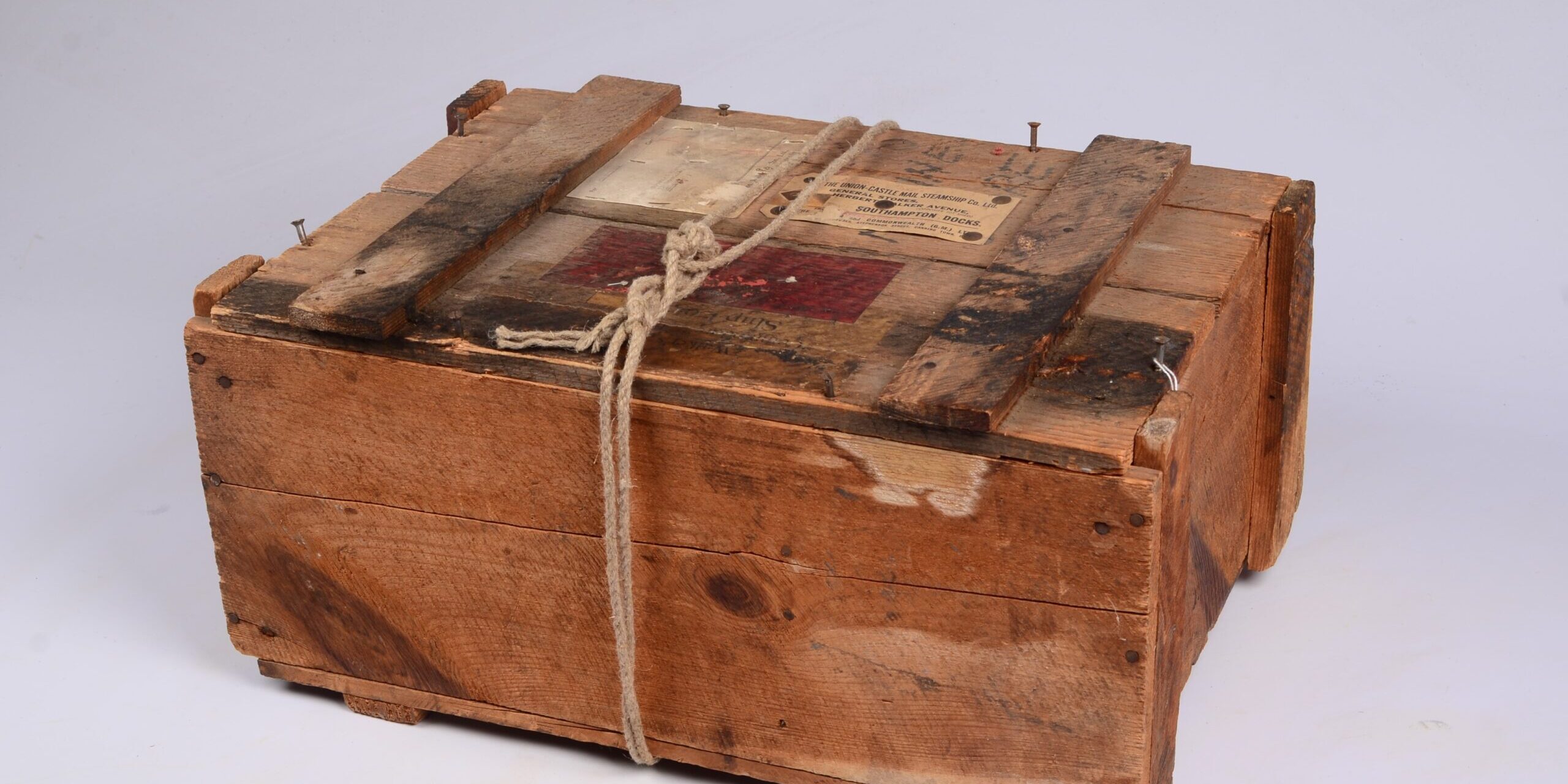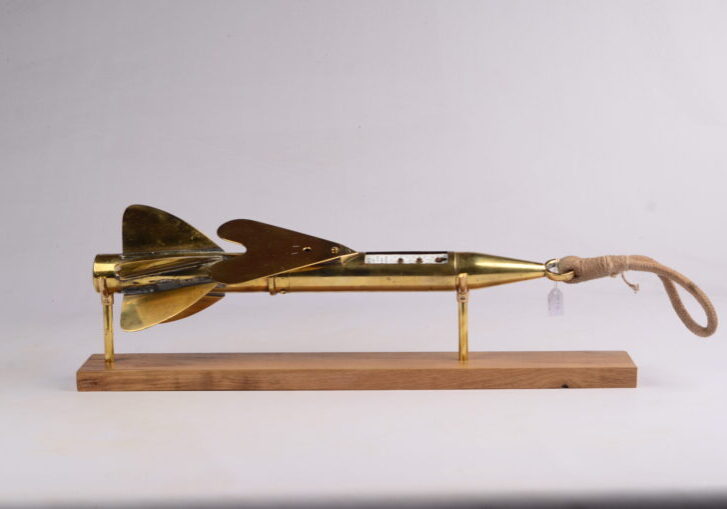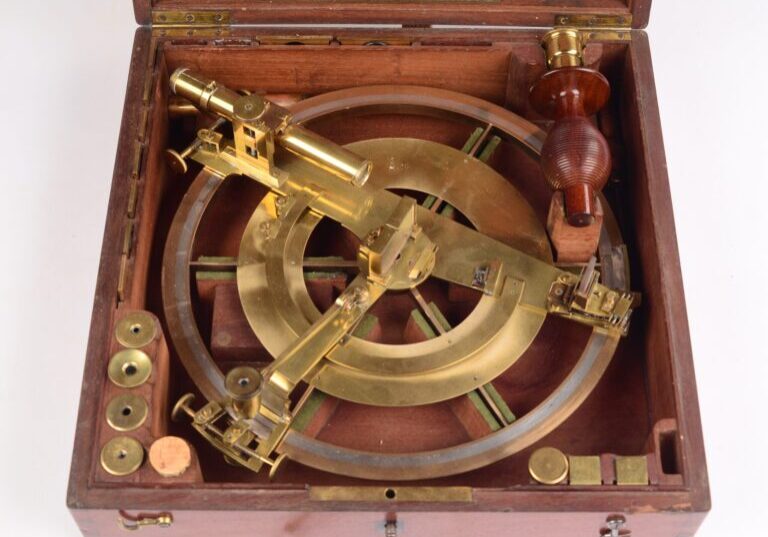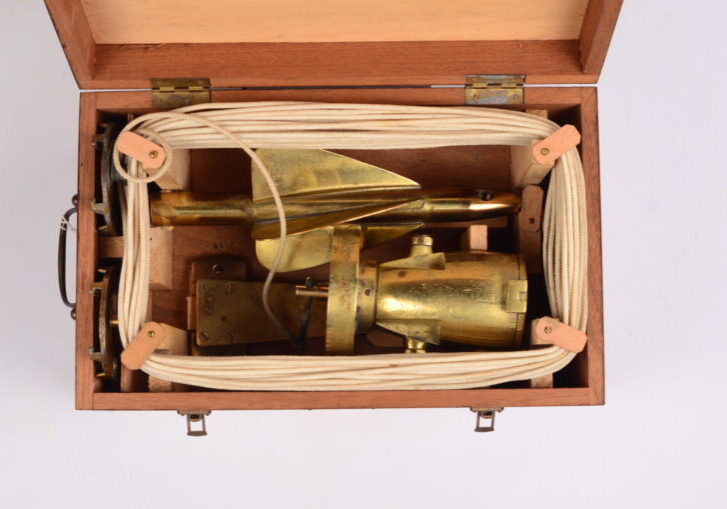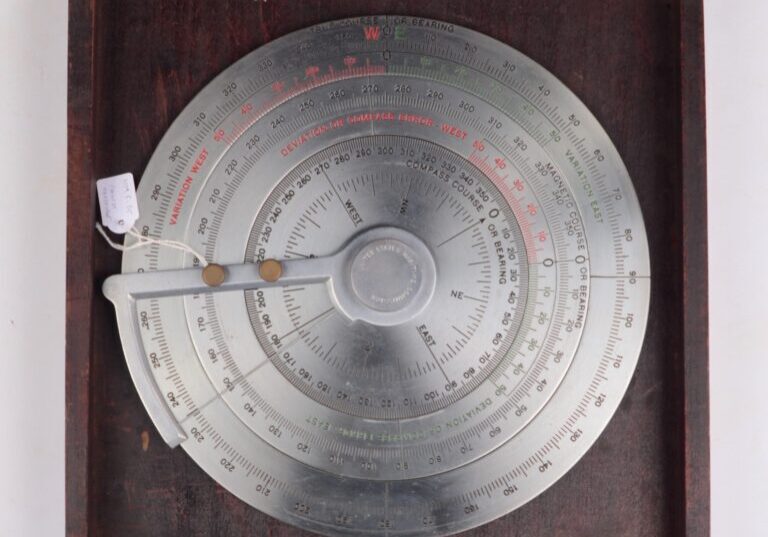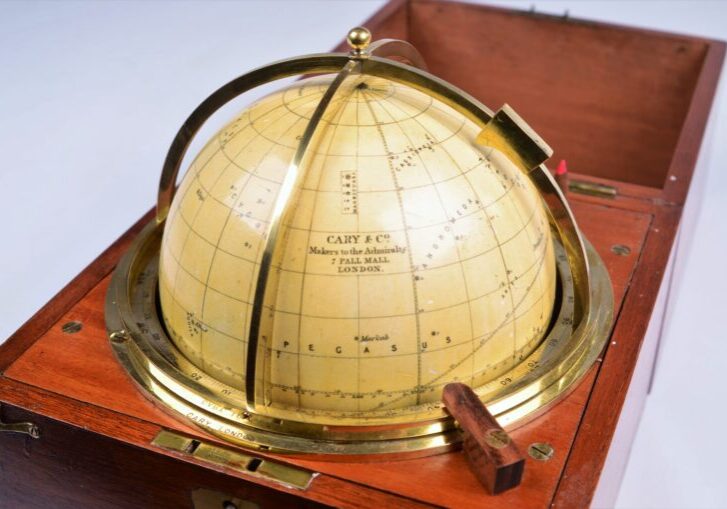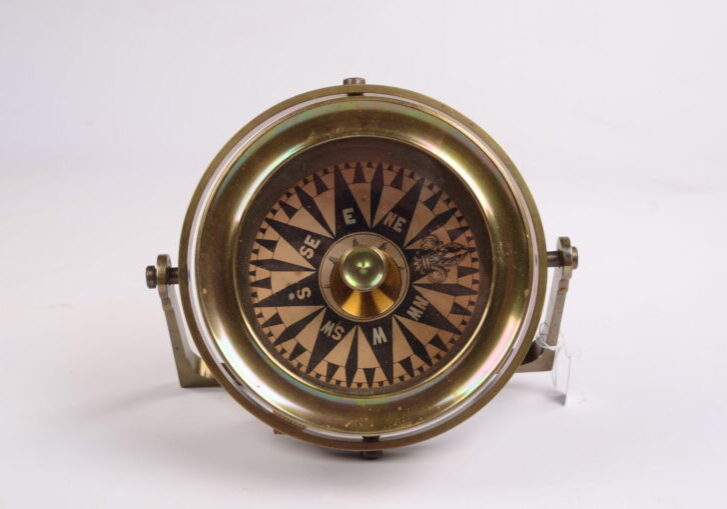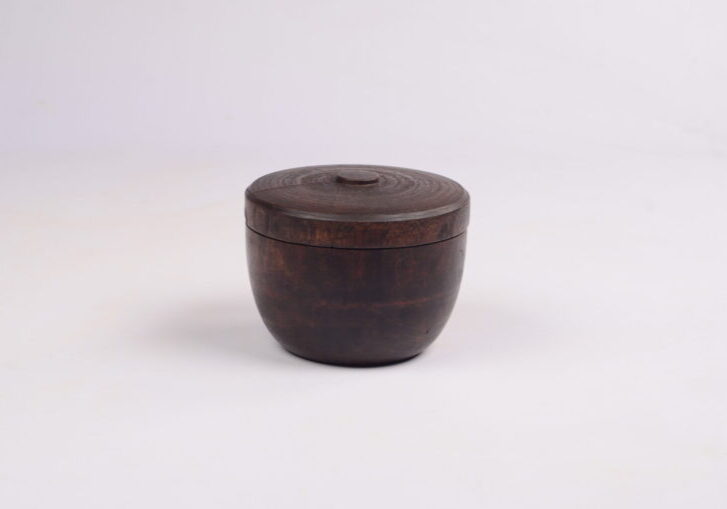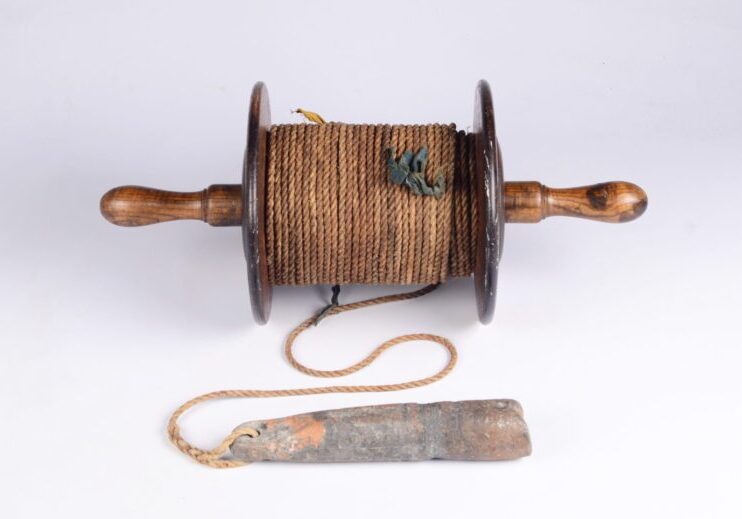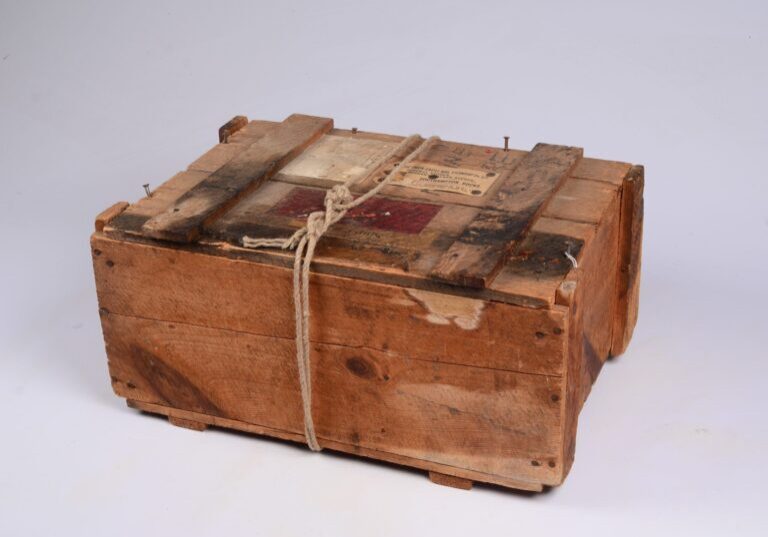Nautical instruments
This part of the collection includes mainly navigational instruments from the early sailing period, the time when ships were made of wood and men were made of steel.
From the 17th century onwards people had made many attempts to devise a mechanical log which would automatically record the ships distance done.
Edward Massey invented a mechanical log in 1802 with four blades which was used by the Admiralty from 1807-1815. When dragged behind the ship the log vins rotates and the revolutions were transformed in miles on the dials, to be read after the log was brought in. The design of Massey was further refined by Thomas Walker and Son, who took out a patent for the A1 Harpoon Log in 1861. Heath & Co., instrumentmakers in London from 1845-1910, made only a few harpoonlogs based on Walkers patent of 1861, also with stabilizer. (more…)
Circle sextant, Borda circle, reflecting circle, circumferator, repeating circle, this instrument is known among several names. In Paris Chevalier de Borda published a description of his instrument in 1787. The instrument can measure angles greater than 180 degrees. At sea, it is used in determining lunar distances. (more…)
A ship-log records the distance travelled through the water. With the time in hours between the observations, it gives the ship’s speed in knots.
A very rare and complete yachting taffrail log. Hardly used. With clock, line, rotator, sinker weight and two shoes in a mahogany case. The log is fixed on a shoe at the stern of a ship. The recorder would have been connected with a line to the rotor at the end of the line. The governor wheel is fitted in an open end housing. The enamel face with two dials.
Catalogue: NM.6-36
Date: appr. 1950
HWD case: 16x36x22 cm
Signed: Loch Vion yachting, case and rotator: E. Vion, Paris
Origin: France
Condition: in very good condition, wear consistent with age and use
Course Corrector of the United States Maritime Commission fixed in original wood box. The divice is a ten inch disk of three rings and has an indicator arm with two thumb screws.
The device is used to assist calculating true, magnetic or compass course base upon variation and deviation.
Catalogue: NM.6-35
Date: 1940 – 1950
HWL case: 4.5x30x30 cm
D corrector: 25.5 cm
Signed: not signed
Origin: USA
Condition: in good and working condition, wear consistent with age and use
Making position by observation of stars is done at twilight. With partly cloudy skies it can be difficult to find the right stars. This star globe helps with it. In the lid of the box there is a paper label with instructions for use. Inventor of this outil is Vincent John English.
The wooden deck box of mahogany is brass-hinged and dovetailed with two clasps for locking. The globe is mounted in a brass meridian circle. The brass horizon circle carries a azimuth ring with four vertical quadrants and a cursor. With red and blue crayon gras pencils, brass pointer and key. The whole is a bit more modest than the Hughes globes. Diameter respectively 180 and 140 mm. Cary star finders are very rare.
Catalog: NM.6-33
Date: 1895 – 1898
HWD case: 20.5×20.5×20.5 cm
D globe: 140 mm
Globe signed: Cary & Co, Makers tot he Admiralty, 7 Pall Mall, Lond
Horizon ring signed: Cary London Pat. N0 21540
Origin: England
Condition: very well, complete and in working condition, wear consistent with age and use
Well preserved dry card and gimbaled brass tell-tale compass. The rose is made up of several layers of paper with 32 points. North with beautiful fleur de lis. On the rose, the letters E and W are painted over the old letters. Originally the rose will not be English. The inside of the binnacle is painted dirty white.
Catalogue: NM.6-20
Date: 1870 -1900
HD binnacle: 9.0 x 16.0 cm
Signed: not signed
Origin: unknown
Condition: perfect
Dry card compass in a linden bowl with lid. With a brass top the rose can move freely on a peg. The inside of the binnacle is painted dirty white with lubber line.
Catalogue: NM.5-30
Date: 1800 – 1830
HW bowl: 10 x 13 cm
D rose: 10 cm
Signed: not signed
Origin: England
Condition: good
Widely used deeplead of 10 lbs with a leadline on a reel to find waterdepth and type of soil. The length of the line is 25 fathoms. The first five fathoms are marked with blue tarlaulin flag around the fathom. Thereafter every two and a half fathom is indicated with a yellow flag.
The bottom of the lead is provided with a hollow to put in some fat. Adhered soil gives an indication of the structure of the seabottom. The reel is made of oak.
Catalogue: NM.6-30
Date: 19th century
LD reel: 53×23 cm
Signed: not signed
Origin: unknown
Condition: perfect, working and wear consistent with age and use
Large and heavy electrified taffrail log with plug connection and fly wheel in original case. Cherub rotator used. The enamel scale has three registers.
The large one up to 100 miles, two smaller up to 10 and 1000 miles. Brass and glass guarded face cover unscrews to reveal the dials. Maker’s name engraved. Serial number AF9136. Lid with screws and labels of Walker’s, of the Union-Castle Mail Steamship Co. Ltd. and of Christie & Wilson Ltd.
Catalogue: NM.6-26
Date: ca. 1958
DL: 12×29 cm
Case: 25x53x35,5 cm
Signed: Walker’s Commodore Electric Log, AF9136
Origin: England
Condition: in very good condition, wear consistent with age and use
